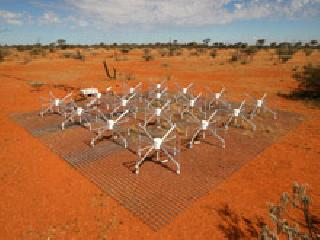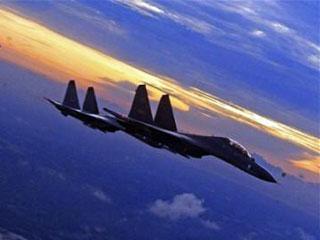
The MWA will consist of 8000 dual-polarization dipole antennas (image). An Murchison Widefield Array photo.
PERTH (PTI): In a joint project involving India, Australia and the US, a next-generation radio telescope is being built in western Australia to study the early Universe, Sun and space weather.
The Murchison Widefield Array (MWA) is a radically new type of radio telescope, with no moving parts, and dependent on prodigious computer power to create exquisite real-time wide-field images of the radio sky, Professor Steven Tingay of the International Centre for Radio Astronomy Research at Curtin University told PTI.
Having frequencies ranging from 80 to 300 MHz and located in the radio-quiet western Australia outback, the MWA will observe with unprecedented sensitivity to discover low-frequency radio phenomena that have never been seen before, he said.
The MWA, with a total cost of 30 million Australian dollars (USD 28.98 million), is an international project led by Curtin University in Australia, MIT Haystack Observatory in the US and the Raman Research Institute (RRI), Bangalore.
Scientists and engineers at the RRI are supplying critical digital electronics sub-systems for the MWA, Tingay said.
Explaining the work, he said, "The radio waves from the distant Universe are converted into electrical signal by the antennas. These signals will go to the receiver where they are converted by the digital sub-system into digital signals, that can then be transmitted via optical fibre to a central processing facility for conversion into images of the sky."
"The cost of antennas is very low and they are very small but we are using new and sophisticated technologies in this project, particularly in the computing and signal processing required for the instrument," Tingay said.
A total of 128 antennas will be located over a 3 km area and will be serviced by 16 receivers containing the digital sub-systems from RRI.
Eight antennas are plugged into one receiver. The 128 antennas instrument will be completed by the end of 2012.
The project will study the early Universe, Sun, space weather and time variability of the radio sky. Cosmologists will use the MWA to map the Universe during the Epoch of Reionization, soon after the Big Bang, when the earliest stars, galaxies and quasars formed.
The MWA will map the Sun in the day, with particular focus on solar storms and the ever-changing solar magnetic field that shapes those storms and in turn determines space weather around Earth. And when not looking at the early universe or Sun, the MWA will map the radio sky in the first systematic search for variability, as from supernovae etc.
The MWA is the first so-called large-N array. The field of view is large by the standard of astronomical instruments, being on the order of 30 degrees, Tingay said.
The MWA is located near Boolardy station in Western Australia, at the Murchison Radio-astronomy Observatory (MRO).
The MRO is also the site of CSIRO's Australian Square Kilometre Array Pathfinder (ASKAP) and one of two candidate sites for the Square Kilometre Array (SKA).
In addition to the geographic link, the MWA is a technology and science pathfinder for the SKA.
 Previous Article
Previous Article Next Article
Next Article












The Indian Air Force, in its flight trials evaluation report submitted before the Defence Ministry l..
view articleAn insight into the Medium Multi-Role Combat Aircraft competition...
view articleSky enthusiasts can now spot the International Space Station (ISS) commanded by Indian-American astr..
view article